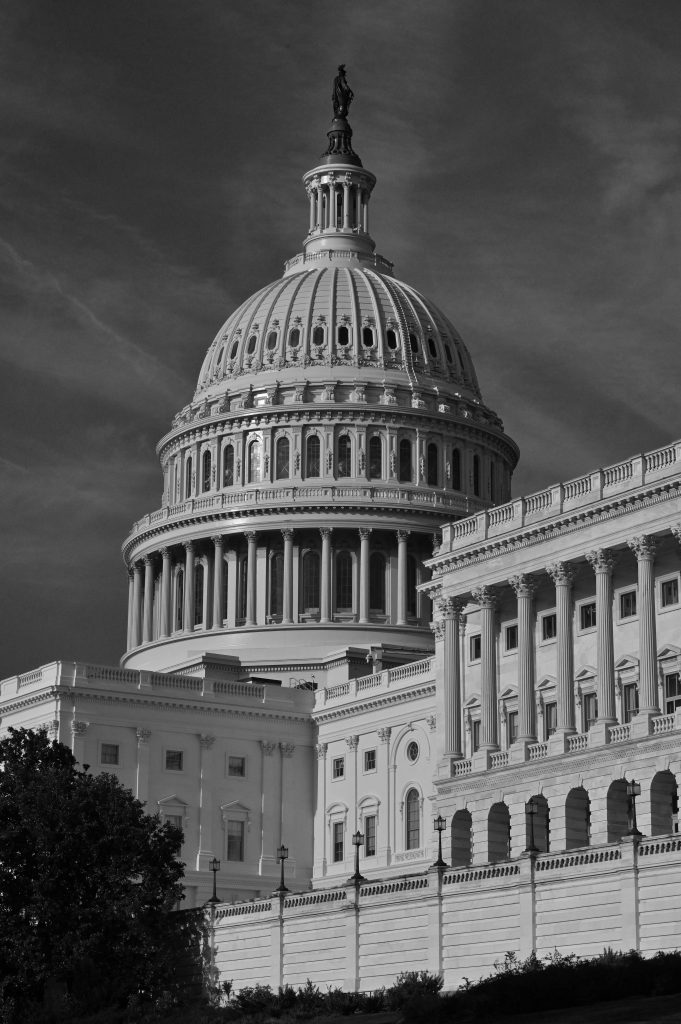Won’t You Be My (Good) Neighbor: Impending Clean Air Act Arguments Before the Supreme Court

By: Scott Tillinghast*
Next Wednesday, February 21st, the Supreme Court will hear oral arguments surrounding the Good Neighbor Plan, a 2023 final rule published by the Environmental Protection Agency (EPA) for the National Ambient Air Quality Standard (NAAQS) for ozone.[1] The Clean Air Act (CAA) requires the EPA to issue NAAQS for several air pollutants, including ozone, to limit the release of these pollutants into the ambient air in each state.[2] The “Good Neighbor” provision of the Clean Air Act requires upwind states to ensure that their ambient air emissions do not adversely affect the ability of their downwind neighbor states to comply with the air-quality standards.[3]
Through a theory of cooperative federalism under the CAA, states are encouraged to develop state implementation plans (SIPs) to regulate intrastate and cross-state air pollutants.[4] But when states fail to develop proper SIPs approved by the EPA, the EPA will impose a federal implementation plan (FIP) instead.[5] In 2023, the EPA disapproved of 21 SIPs developed in response to the 2015 NAAQS for ozone.[6] In place of those SIPs, the EPA issued the Good Neighbor Plan, an FIP for 23 states.[7]
The Good Neighbor Plan, 88 FR 36654, requires the affected states to reduce their emissions of ozone and its precursor nitrogen oxide (NOx) from electric generating units and stationary industrial sources.[8] Among other requirements, states will receive a budget of “permissible emissions,” and fossil fuel-fired power plants in the covered states will be able to “buy, sell, and bank emissions allowances” through trades conducted with emissions sources in any covered state.[9]
The plan was quickly challenged in court, and seven federal appeals courts have blocked the EPA’s disapproval of a number of state’s plans leaving only eleven states subject to the Good Neighbor Plan.[10] The Supreme Court is set to hear arguments from four consolidated cases challenging the Good Neighbor Plan; Ohio, Indiana, and West Virginia, with energy companies and trade unions, have challenged the federal rule as arbitrary and capricious the standard of judicial review for federal agency regulations under the Administrative Procedure Act (APA).[11] These challengers requested a stay of the federal rule while litigation continues in federal appeals court.[12] The Supreme Court deferred the application for a stay in December, and scheduled oral arguments for February 2024.[13] The argument before the Supreme Court will focus on “whether the emissions controls imposed by the Rule are reasonable regardless of the number of States subject to the Rule.”[14]
The state applicants will argue that the plan is arbitrary and capricious, inflicts irreparable economic injuries, and is likely to harm the public interest by causing electric grid emergencies.[15] Applicants contend that “in the EPA’s view, the only acceptable state plan is one that is functionally equivalent to its own,” and that the federal plan should be stayed because it now applies to only half of the intended states.[16] The EPA claims that staying the implementation of the Rule would “significantly harm the public interest” by allowing air pollution in upwind states to cause unhealthy air in downwind states in direct violation of the congressional statutory intent of the Clean Air Act and the Good Neighbor provision.[17] Respondents from ten states filed a brief in support of the Good Neighbor Plan, arguing that the Court should deny the applications for a stay of the final rule.[18]
The most compelling arguments are those provided by the EPA and the state respondents from downwind states. The purpose of the CAA is “to protect and enhance the quality of the Nation’s air resources so as to promote the public health and welfare and the productive capacity of its population [and] to encourage or otherwise promote reasonable Federal, State, and local governmental actions . . . for pollution prevention.”[19] This purpose is best served by maintaining the Good Neighbor Plan while challenges continue in federal court. Staying the plan, as applicants have requested, would allow upwind states to continue releasing harmful NOx emissions at higher levels, causing respiratory problems in the populations of their downwind neighbors.
Will the Supreme Court stay the Good Neighbor Plan for causing harm to the public interest while challenges to this air pollution emissions rule continue in the lower courts? Don’t hold your breath.
* J.D. Candidate, Class of 2025, Sandra Day O’Connor College of Law at Arizona State University.
[1] Supreme Court of the United States, https://www.supremecourt.gov/ (last visited Feb. 13, 2024).
[2] 42 U.S.C. § 7409; Kate R. Bowers, Supreme Court to Consider Request to Stay EPA’s Good Neighbor Interstate Air Pollution Rule 1 (Cong. Rsch. Serv., Jan. 24, 2024), https://crsreports.congress.gov/product/pdf/LSB/LSB11107#:~:text=On%20February%2021%2C%202024%2C%20the,interstate%20transport%20of%20ozone%20pollution.
[3] 42 U.S.C. § 7410(a)(2)(D).
[4] 42 U.S.C. § 7402; Bowers, supra note 2.
[5] Bowers, supra note 2, at 1–2.
[6] Id. at 2.
[7] Id.
[8] Carrie Jenks & Hannah Oakes Dobie, 2023 Good Neighbor Plan, Env’t & Energy L. Program (Mar. 21, 2023), https://eelp.law.harvard.edu/2023/03/2023-good-neighbor-plan/.
[9] Bowers, supra note 2, at 2–3.
[10] Adam Liptak, Supreme Court Will Consider Putting Biden’s Plan to Address Air Pollution on Hold, N.Y. Times (Dec. 20, 2023), https://www.nytimes.com/2023/12/20/us/supreme-court-epa.html.
[11] Id.; 42 U.S.C. § 7607.
[12] Amy Howe, February Oral Argument Scheduled for “Good Neighbor” Pollution Rule Challenges, SCOTUSblog (Dec. 20, 2023), https://www.scotusblog.com/2023/12/february-oral-argument-scheduled-for-stay-applications-in-good-neighbor-pollution-rule-challenges/.
[13] Order in Pending Cases, Ohio v. EPA, Nos. 23A48–51, 23A384 (Dec. 20, 2023) https://www.supremecourt.gov/orders/courtorders/122023zr_bp7c.pdf.
[14] Id.
[15] Emergency Application for a Stay of Administrative Action at 2, Ohio v. EPA, Nos. 23A349 (Oct. 13, 2023), https://www.supremecourt.gov/DocketPDF/23/23A349/284940/20231013090543221_SCOTUS%20Stay%20Application.pdf.
[16] Id. at 16–18.
[17] Response in Opposition at 4, Ohio v. EPA, Nos. 23A49–51 (Oct. 2023), https://www.supremecourt.gov/DocketPDF/23/23A349/288380/20231030150910307_23A349%2023A350%2023A351%20response.pdf.
[18] Brief for State Respondents at 2, Ohio v. EPA, Nos. 23A349–51 (Oct. 30, 2023), https://www.supremecourt.gov/DocketPDF/23/23A349/288395/20231030154012598_Respondents%20NY%20et%20al%20Opposition%20to%20Stay%20Applications.pdf.
[19] 42 U.S.C. § 7401.


